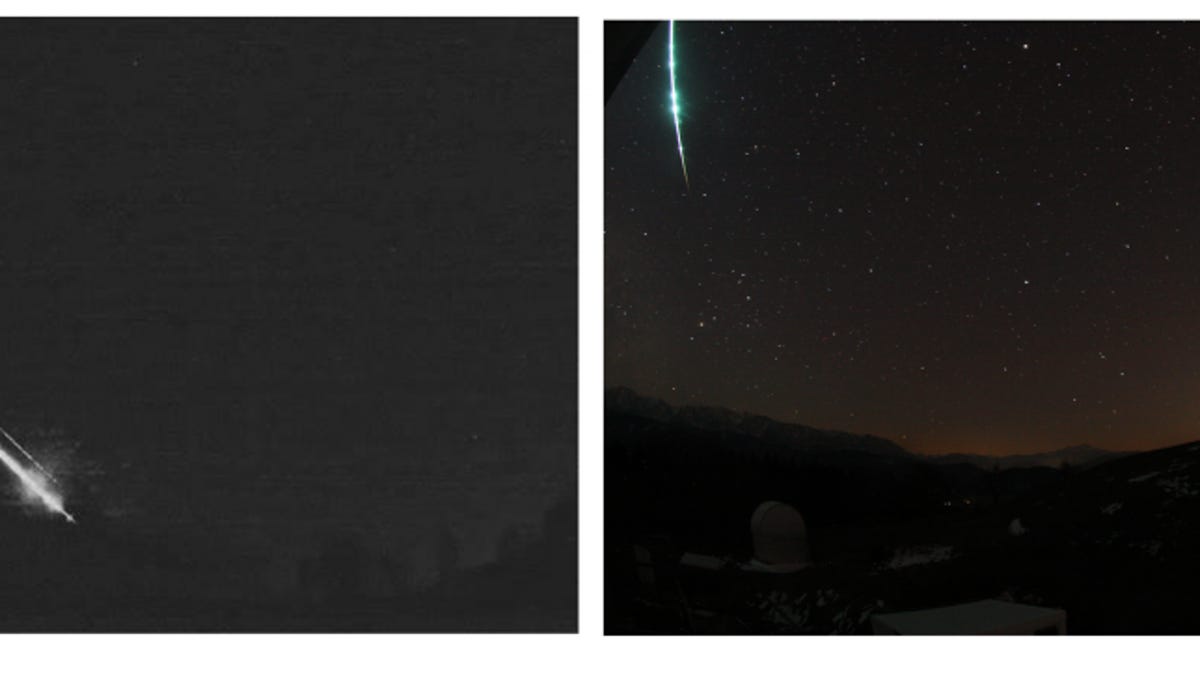Three space rocks spotted burning up over three hours on the same night
A trio of fireballs flamed out over the same part of the globe on the same night.

A fireball spotted over Germany.
If you were able to hang out in the upper atmosphere over Europe and just keep an eye on things from above, you might have thought the continent was under attack from space rocks last Wednesday evening and early Thursday morning.
Three meteoroids were spotted burning up in the atmosphere over Belgium and Germany within just a few hours of each other. In fact, the first two of the trio lit up the skies over Belgium in the span of less than an hour. That pair was spotted by the French Fireball Recovery and InterPlanetary Observation Network (Fripon), which includes an all-sky camera in Brussels.
NASA's CAMS meteor detection network also picked up the meteors and the third fireball of the evening over southern Germany was also spotted by a handful of eyewitnesses.
It doesn't take much to put on a show when bits of space debris collide with the atmosphere. Pebble-sized bits can create the dimmer, more fleeting "shooting stars" associated with meteor showers, while slightly bigger chunks can create brilliant fireballs.
With three meteors burning up in the atmosphere over the same part of the globe on the same evening, it's possible that they may have a common history. They could represent three small fragments that were once part of a larger asteroid, but we may never know for sure.
April could be a good month for more meteors. The Lyrid meteor shower is set to peak later in the month, but fireballs can pop up anytime, day or night, so keep your eyes up!

